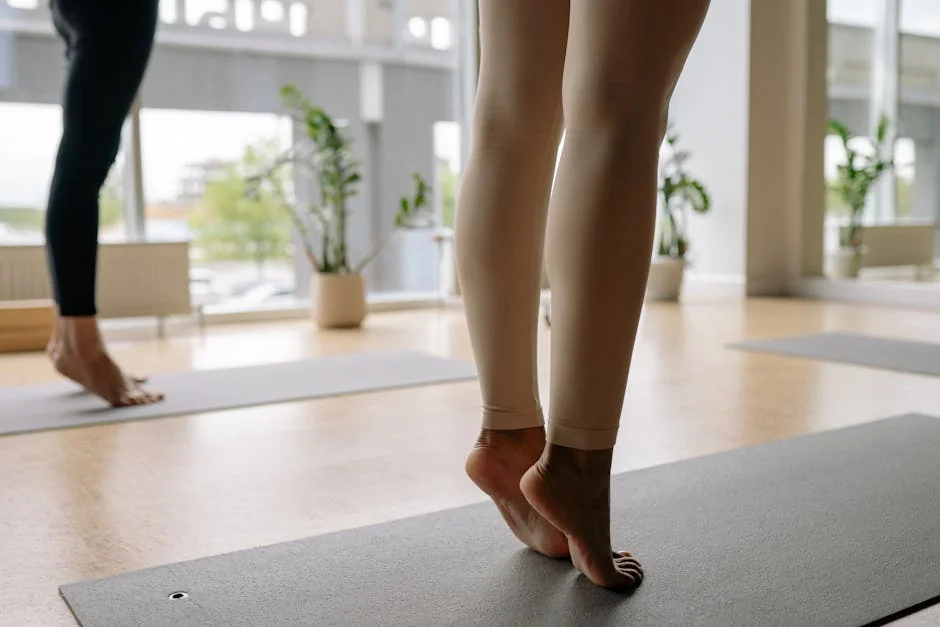Does your to-do list seem to get longer while your attention span gets shorter? In our world of pinging notifications and endless tabs, the ability to concentrate feels like a superpower. You’ve likely searched for ways to increase focus and concentration because you feel the mental drain of constant distraction. The good news is that a scattered mind isn't a life sentence; it's a skill you can train.
This guide moves beyond generic advice to offer a meditation expert’s approach to building an unshakable focus. We’ll explore not just the environmental tweaks that help, but the powerful mental exercises that rewire your brain for deep concentration from the inside out. Get ready to discover foundational habits, core meditation techniques, and simple mindfulness practices you can weave into your day. Let's reclaim your focus and turn your attention into your greatest asset.
Understanding the Mind: How Focus and Meditation Work Together
Focus is your brain's ability to direct its computational resources toward a single task, while concentration is the sustained effort of holding that focus over time. Think of it like a muscle; the more you use it correctly, the stronger it gets.
The primary obstacle is what meditation teachers call the "monkey mind"—the constant, chattering stream of thoughts, worries, and distractions. This isn't a personal failing; it's the brain's default mode. Meditation is the deliberate practice of noticing when your mind has wandered and gently guiding it back. This repetition is the rep that builds your "attention muscle," scientifically shown to strengthen the prefrontal cortex, the brain's command center for focus. Understanding this connection is the first step toward effective ways to improve focus and concentration.
Foundational Habits: Creating an Environment for Deep Focus
Before training the mind, it helps to optimize your surroundings. These practical steps reduce the external friction that scatters your attention.
Optimize Your Physical and Digital Space
Your environment has a profound impact on your mental state.
- Declutter Your Desk: A clear physical space promotes a clear mental space. Remove anything not essential to your current task.
- Control Noise: Use noise-canceling headphones, a white noise machine, or calming instrumental music to block out unpredictable sounds.
- Tame Digital Distractions: This is non-negotiable. Turn off non-essential notifications and use apps like Freedom or Cold Turkey to block distracting websites during work sprints.
Master Your Schedule and Energy
Focus is a finite resource that needs to be managed.
- Embrace Single-Tasking: Multitasking is a myth that fractures your attention and increases errors. Commit to one task until completion or a natural break point.
- Fuel Your Brain: Dehydration, poor sleep, and sugary snacks create mental fog. Prioritize 7-9 hours of sleep, drink plenty of water, and choose brain foods like nuts, berries, and leafy greens. For those whose mental fog is compounded by stress, exploring ways to decrease stress and anxiety can provide a significant cognitive boost.
Core Meditation Techniques to Sharpen Your Concentration
This is where you build focus from the ground up. Consistent practice with these techniques creates lasting neural changes.
Breath Awareness Meditation (Anapanasati)
This is the foundational practice for training attention.
- Sit comfortably with a straight spine. Close your eyes or soften your gaze.
- Bring your attention to the physical sensation of your breath. Feel the air moving in and out of your nostrils, or the rise and fall of your chest or abdomen.
- Your mind will wander. Without judgment, the moment you realize it has drifted, gently guide your focus back to the breath. This act of noticing and returning is the practice.
Counting the Breaths
For a more focused anchor, try counting.
- Inhale, and on the exhale, mentally count "one." On the next exhale, count "two." Continue up to "ten."
- Once you reach ten, start the cycle again at one. If you lose count, simply start back at one without frustration.
Body Scan Meditation
This practice builds concentrated sensory awareness.
- Lie down or sit comfortably. Bring your attention to the toes of your left foot. Notice any sensations there—tingling, warmth, pressure.
- Slowly, and with focused attention, move your awareness up through your left foot, ankle, calf, and knee, spending a few moments on each area.
- Continue this systematic scan through your entire body. This trains your mind to hold a focused, moving point of attention.
Integrating Mindfulness: Quick Focus Exercises for Your Day
You don't need to be on a cushion to train your focus. Weave these micro-practices into your existing routine.
The Pomodoro Technique with a Mindful Twist
This time-management method is supercharged with mindfulness.
- Set a timer for 25 minutes and work with single-pointed focus.
- When the timer rings, take a mandatory 5-minute break. Instead of scrolling on your phone, use this break for a mindful practice: stare out the window, take three deep, conscious breaths, or feel your feet on the floor.
- This rhythm prevents burnout and resets your attention span.
Mindful Eating
Turn a daily necessity into a focus exercise.
- For the first three bites of your next meal, put down your fork. Notice the food's color, smell, and texture.
- Chew slowly, paying attention to the changing flavors and sensations. This practice of sustained sensory focus is a powerful mini-meditation that anchors you in the present. To dive deeper into this powerful connection, our guide on concentration and mindfulness offers more practical applications.
Building a Sustainable Focus Practice
Lasting change comes from consistency, not perfection. Start small to make these ways to improve focus and concentration stick.
- Begin with Five Minutes: Commit to just five minutes of breath meditation each day. A small, consistent habit is far more powerful than an ambitious one you abandon. If you need a structured plan, our help with focus and concentration provides a step-by-step framework.
- Anchor to a Habit: Pair your meditation with an existing habit, like right after you brush your teeth in the morning or right before your first cup of coffee.
- Be Kind to Your Wandering Mind: The goal is not to stop thoughts, but to become the calm observer who notices them. Every time you gently guide your attention back, you are succeeding. For those looking to build this skill systematically, learning how to train the mind to focus is an excellent next step.
Your ability to focus is the gateway to your productivity, creativity, and peace of mind. By combining a supportive environment with targeted mental training, you can move from feeling mentally scattered to being intentionally focused. Start with one technique that resonates with you, practice it consistently, and watch your concentration transform from a fleeting resource into a steady, reliable strength.
In a world saturated with distractions, the ability to focus is not just a productivity tool but a fundamental skill for success and well-being. The journey to improved concentration is a personal one, built on a foundation of consistent, practical habits. As we have explored, this involves optimizing your environment to minimize interruptions, prioritizing single-tasking over multitasking, and taking strategic breaks to sustain mental energy. Furthermore, foundational lifestyle choices—particularly quality sleep, regular physical activity, and mindful nutrition—are non-negotiable pillars that support cognitive function. Techniques like the Pomodoro Technique and mindfulness meditation provide structured methods to train your attention muscle. Ultimately, enhancing your focus is about making intentional choices each day. Start by integrating just one or two of these strategies into your routine. With patience and practice, you can cultivate a sharper, more resilient mind, unlocking greater clarity and achievement in all your endeavors.



